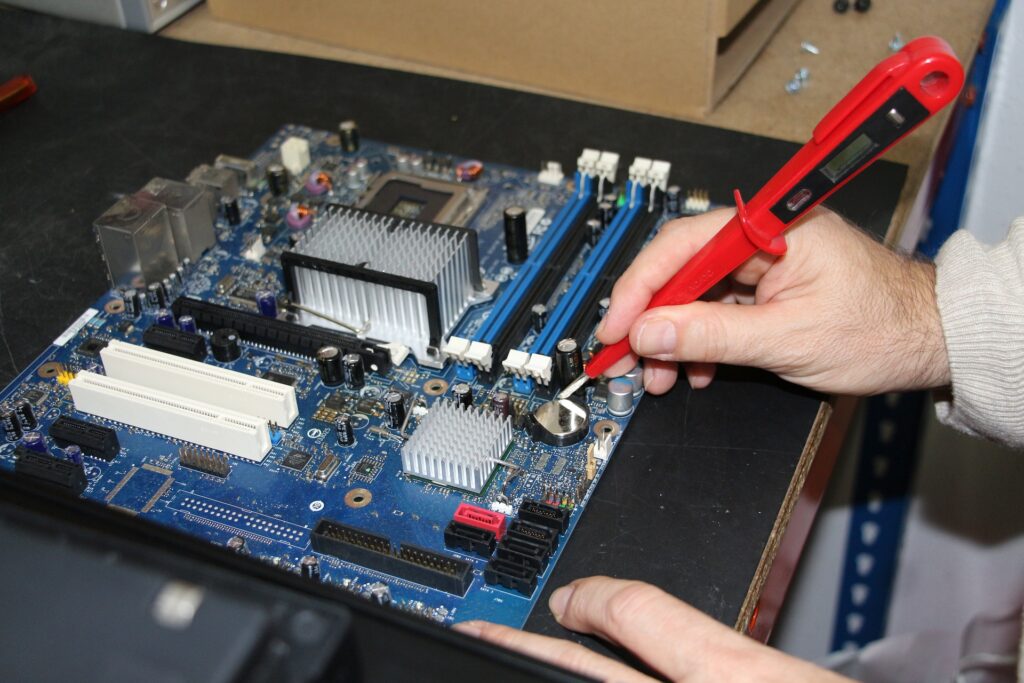
All of us are continuously looking for ways to avoid spending big dollars for computers, monitors, printers, or other tech equipment. Often a purchase of slightly used or refurbished technology may serve as well as the latest and greatest. Experienced techs sometimes suggest that purchasing rebuilt or refurbished equipment is a good alternative to buying new. Saving dollars is important when setting up or running a business. But there are a more than a few pitfalls with “refurbished,” equipment. To avoid headaches, take some time to review some of these pressure points surrounding the purchase of “other than new,” electronics.
What defines “refurbished,” and how to know the difference between a good deal or what could probably be a fraud?
State, and Federal agencies have attempted to provide consumers with guidelines surrounding refurbished goods. Just be aware that currently there is no legal definitions that specifies refurbished goods. The term “refurbished,” are very general and often include the following guidelines.
A refurbished product is:
- · A demonstration product that has been on display in a store, but not actually sold
- · A new product that has visible damage on the external package
- · A used item that has been repaired and reconditioned – either by a known manufacturer or an authorized third-party.
- · A product that has been returned by a consumer with zero or little use
Consumer Rights agencies, and legal experts are clear on one key point. A product cannot, under any circumstances, be sold as new if it has been opened, or sold and returned – no matter what the reasons might be.
Before considering a refurbished product the overall rules to follow are simple and we think, are based upon relatively common practices.
Identify the tasks that are “mission critical,” for your business. Then match the equipment.
For example, if the need to edit long videos, work on large graphic design files, or data-intensive projects, the need for newer equipment may be overwhelming. On the flip side, basic Internet research, crunching numbers in Excel spreadsheets, or participating in Zoom calls, will not require a high-end brand-new device. If this latter job description fits more into your typical workday, a new computer or other cutting-edge devices might not be a cost-effective choice.
One other note. If the need to delve into gaming is an important part of the buying decision, the computer that is chosen must have CPU, memory (RAM), and graphics capabilities that will support the game. The good news is, that there are currently growing numbers of quality refurbished gaming computers available.
Understand the precise definition of the vendors (Sellers) definition of “Refurbished.”
Almost all hardware vendors have a “Refurbished Policy.” These guidelines are often within the listing of the individual product. Unfortunately, statements from the technology vendor community are mixed. For example, Amazon will use the term “Renewed,” and offer “manufacture certification,” and “Authorized reseller.” Certification details need to be read and understood prior to purchase. While Newegg, another well-known online vendor, stays with a simplified “Refurbished” label, their listings include specifics that can be read withing each product listing. The global auction house eBay has multiple rules for sellers to follow when listing “New,” vs. “Refurbished” computers or other devices. The seller must choose one of seven different descriptors of the product when preparing a listing for eBay. The status of an item must be declared as either, New, New other, Open box, Certified refurbished, Seller refurbished, Used, or for parts or not working. A seller listing cannot be posted until one of these Conditions are chosen.
Bottom line. Do research before purchasing. Understand each vendor’s policy surrounding refurbished or “other than new” hardware. Plus, remember that a vendor’s policies may change over time. A rule that is published in January may change by March of the same year.